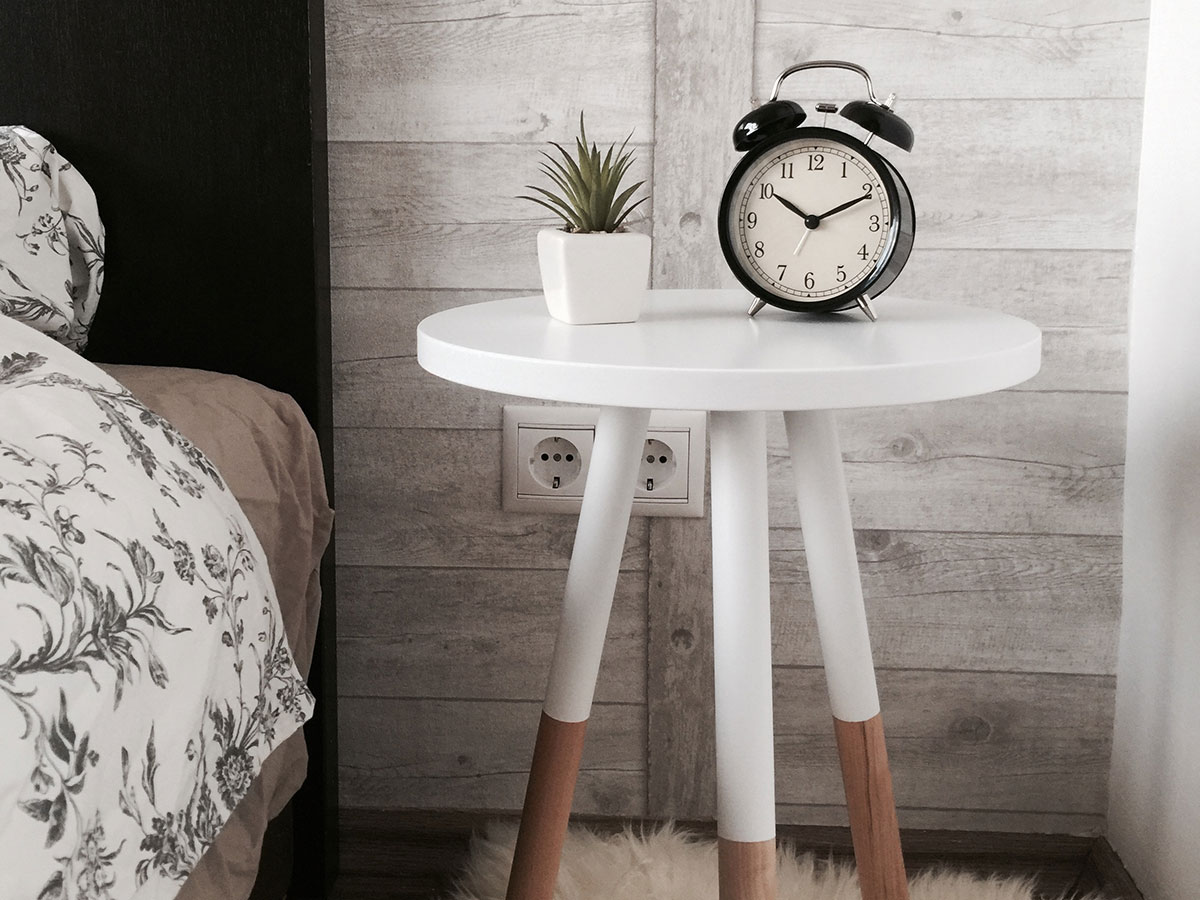Suffering from a sleep disorder? Finding quality sleep solutions starts with a healthy understanding of the sleep cycle stages and how they affect the quality of shut-eye you experience each night.
Knowing what you can do to get the most out of your sleep cycles can help you wake up feeling more refreshed. Keep reading for tips on how to get better sleep.
Related: Why We Sleep (And Why It’s So Important to Sleep Well)
The 4 Sleep Cycles and How They Affect Your Body
A standard sleep cycle has four stages. These stages are divided into two groups. The groups are NREM (non-rapid eye movement) and REM (rapid eye movement). The first three are NREM, the fourth is REM.
Each stage of the sleep cycle is different, therefore, physiologists have identified them as distinct behavioral states. Once you’ve gone through all four stages of the sleep cycle, you’ll begin at stage one again.
Typically you’ll move through each phase sequentially, but the duration of the phases changes throughout the night. REM sleep becomes longer as the night progresses, while other stages become shorter.
In addition to shifting durations throughout the night, age is another factor influencing the duration of each stage. For example, the older you are, the less deep sleep (stage 3) and REM sleep you get. Newborns, on the other hand, spend half of their total sleep in REM sleep. While toddlers, two years and older, spend a quarter of their sleep in the REM stage.
Stage 1 – NREM
Stage one is the lightest stage of sleep. Think of someone indulging in brief ‘catnaps’ on their lunch break at work.
The first stage takes place within minutes or even seconds after nodding off. It lasts between one and ten minutes and is very light sleep. If you’re even slightly disturbed, it’s easy to return to a wide-awake state.
There may even be instances where a person will wake up feeling as if they were never asleep at all.
In stage one, your muscles are still active, but your breathing pace slowly decreases, along with body temperature, blood pressure, and rate of heartbeat.
Within these first minutes of sleep, your brain produces alpha and theta waves and your eye movements slow down.
Ever felt like you were on the cusp of sleep, but then you jolt awake suddenly, feeling like you’re falling? These hypnic jerks occur in stage one and can be an unpleasant way to wake up.
How to Create a Sleep Environment that Will Help You Get Past the First Stage of Sleep
- Reduce the number of electronic devices in the bedroom. As much as possible, keep a tv, phones, and computers out of the bedroom (or at least placed away from the nightstand and if possible, turn on night mode).
- Keep your bedroom cool. The ideal temperature range for sleep is between 60 and 67 degrees Fahrenheit.
- Create a noise-free environment. You may not consciously register or notice the ticking of a clock or humming of a fan but most noise can hinder your ability to sleep (On the other hand, a white noise generator can be helpful to many).
- Keep your sleeping area dark. The glow of a nearby street light, night light or electronic device will reduce your body’s production of melatonin (your sleep hormone). This is especially true for blue light which electronic devices emit. Those should be avoided (or blocked) 30 minutes or more before your intended bedtime.
- Maintain a clutter-free room. This will create a more peaceful environment and has shown to positively impact sleep.
- Use scent to influence sleep. There is some evidence that certain scents, such as lavender, peppermint, valerian and Ylang Ylang may help put you in a more peaceful relaxed state to help you fall asleep and stay asleep.
- Wash your bed sheets regularly. Dust and pet dander can build up and aggravate any sensitivities that may keep you awake.
Stage 2 – NREM
We spend most of our night in stage two sleep. After stage one has passed, it becomes more difficult to wake up.
The blood pressure of the body and other metabolic functions slow even more, brain waves slow down and body temperature decreases to prepare for deep sleep. The brain also produces sleep spindles, sudden bursts of fluctuating brain activity that is believed to help refresh our memories.
However, within the overall sleep cycle, stage two is still considered light sleep. If you were to plan a power nap aim for 20-30 minutes. Deeper sleep may leave you feeling groggy and confused, rather than refreshed and sprightly.
Stage two of the sleep cycle stages usually lasts around 20 minutes. Combined with the time spent on stage one, this makes for an ideal time frame for a power nap.
Power Tips for Power-Napping
- Get as comfortable as you possibly can in your environment. That can mean simply loosening your tie, creating a makeshift bed out of a coat on the floor and/or taking off your shoes; the cozier you are the more effective your sleep will be.
- Aim to sleep longer than 10 minutes but less than 20 minutes. You don’t want to drop into stage 3 sleep, but you do want to get past stage one.
- Alarms are optional. If you’re stressed out about not waking up, set an alarm. Some people might feel under duress to fall asleep if they do set an alarm. Do what works for you.
- Don’t stress if you don’t actually fall asleep. Remember sometimes a power nap can still be refreshing even if there is no actual sleep.
- Get some sunshine if possible. Taking in a little sunshine after a power nap might help to reset your circadian rhythms.
- Power naps can reduce the need for caffeinated beverages. If you’re trying to reduce your intake of caffeine, power naps can be a helpful tool to wean yourself completely or decrease the amount of caffeine you need to stay alert.
Stage 3 – NREM
Stage three is the beginning of deep sleep. It is also known as ‘slow-wave sleep’ or ‘delta sleep’ because the brain begins to produce slower delta waves. usually lasts for about 30 minutes.
The body is less responsive to your external environment. Waking up proves difficult as the brain produces delta waves, high-amplitude brain waves that are thought to signal the transition between light and deep sleep. At this point in the sleep cycle, you may not show a reaction to noise or movements, even if disturbed.
If you do manage to wake up, you may feel disoriented and groggy for a few minutes as you’ve started your deep sleep.
It’s during this cycle where many sleep disorders occur: sleepwalking, night terrors, bedwetting and talking during sleep. Such behaviors, known as parasomnias, usually transpire during the transition between non-REM and REM sleep stages of the cycle.
As metabolic rates, oxygen consumption, and heart rates decrease, it’s the perfect time for restorative functions to occur. This is when cells can recover from damage caused by oxidative progressions and when explicit memory is processed. This includes episodic memory which collects personal experiences and semantic memory which stores factual information.
This deep sleep cycle is crucial for physical renewal, hormonal regulation, and growth. Without this precious part of the sleep cycle, you’re more likely to become sick, depressed, and gain weight. When tackling any issues related to sleep, it’s first important to make sure you’re getting a minimum of seven hours of sleep a night to give your body an opportunity to tackle such issues.
How to Tell If You’re Getting Good Deep Sleep
- You don’t need an alarm to wake up. You don’t have to hit that snooze button seven times to wake up, in fact, if you get enough restorative sleep you don’t really need the alarm because your body will get the rest it needs.
- You wake up without feeling groggy or tired. In fact, you’re less likely to guzzle a gallon of coffee to start the day because you can function just fine before your first cup of joe.
- You don’t get sick very often. Your body produces infection-fighting cells and antibodies when you sleep, so if you generally weather cold-and-flu season unphased, it is likely your good sleep habits have helped strengthen your immune system.
- You eat less or don’t crave as many “bad” foods. Sleep deprivation will drive you to consume more calories. Research indicates that a “tired” brain associates junk food with pleasure and reward, while a “rested” brain doesn’t activate the reward centers of the brain in the same way. If you’re sleep-deprived, you’ll also seek calorie-dense foods to give you quick energy.
- You’re more positive and wake up in a better mood. There are many documented mood-related benefits with getting good quality sleep. It’s also been shown that with more energy, life is easier to cope with and minor setbacks are less likely to get under your skin.
- You’re more productive at work. A solid night’s rest is linked to higher cognitive functioning. This means that you’re more focused, think more clearly, and tend to overall perform work-related tasks better.
Stage 4 – REM
The last stage of the sleep cycle is famously known as REM or rapid eye movement, due to the intense eye movement that takes place during this stage.
This is the part of the cycle where dreams occur. Despite the rapid movement of the eyes, the body is otherwise paralyzed. Some scientists believe we developed this mechanism to avoid potentially dangerous reactions to frightening or stressful dreams.
The first stage four cycle generally starts once you’ve been asleep for around 90 minutes, but can occur up to 110 minutes after you’ve fallen asleep. An average person has about five or six sleep cycles per night. The first cycle of the night features a shorter duration REM stage (approximately 10 minutes). The length of the REM cycle increases with each subsequent cycle. The last REM stage can last up to an hour.
In REM sleep, the brain processes and synthesizes memories and emotions which are vital for learning and higher-level thought. This is also the stage where your brain processes and consolidates information from the day before to store it in your long-term memory.
Without enough REM sleep, you may experience slower cognitive and social processing, experience problems with memory, and have difficulty concentrating.
To this day, the functions of REM sleep and dreaming are not well understood, but they are believed to aid in memory, mood, learning and emotional processing.
How to Calculate Your Sleep Cycles
Although the first full sleep cycle may last longer, subsequent sleep cycles generally take approximately ninety minutes to cycle through. REM cycles get longer throughout the night, but the entirety of the cycle remains about the same. So in the later 2-3 cycles before awakening more time is spent in REM sleep than NREM sleep.
The average adult needs about four to six full sleep cycles per night, depending on age and metabolism.
- Six hours will get your four sleep cycles
- Seven and a half hours nets you five cycles
- Nine hours will provide you with six sleep cycles
You’re going to want to sleep in a block of time that matches up to those sleep cycles.
If you sleep 10 – 20 minutes longer than a completed cycle you’re probably going to wake up feeling fine. The key is that you wake up in stage one or two and not stage three to avoid feeling groggy.
Ready for Quality Sleep Solutions?
If you suffer from any sleep-related issues including sleep apnea, narcolepsy, or insomnia, then understanding how sleep works may help you combat issues related to poor quality sleep.

